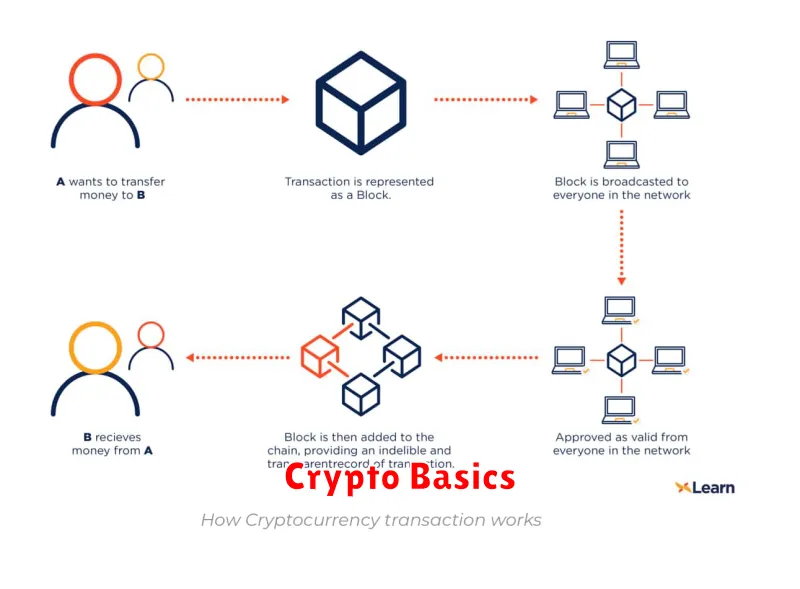Entering the world of cryptocurrency can feel overwhelming, but understanding a few simple terms can make all the difference. This article breaks down five essential crypto terms every beginner must know to navigate the exciting yet complex landscape of digital currencies. Learn about blockchain technology, crypto wallets, mining, NFTs, and decentralization to confidently begin your crypto journey. Mastering these fundamental concepts will provide a solid foundation for making informed decisions in the dynamic world of crypto investing.
What is a Blockchain?
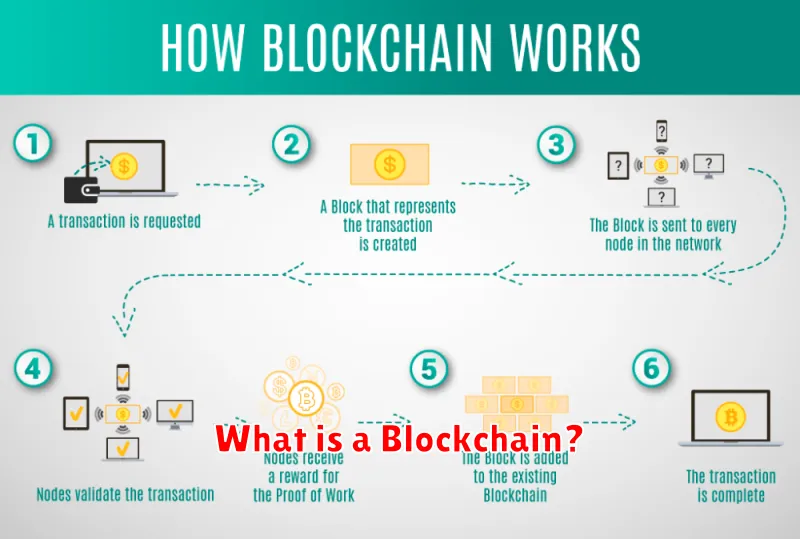
At its core, a blockchain is a shared, immutable ledger that records and verifies transactions in a secure and transparent manner. Imagine a digital record book that is duplicated and distributed across a network of computers.
Each transaction is grouped into a “block,” which is then added to the chain chronologically. Because the blockchain is decentralized and replicated across many computers, it’s incredibly difficult to alter or delete any past transaction.
This decentralization and immutability are key features that provide security and trust. No single entity controls the blockchain, making it resistant to censorship and single points of failure.
The technology underlies many cryptocurrencies, enabling secure and transparent record-keeping of transactions without the need for a central authority like a bank.
Understanding Wallets: Hot vs Cold
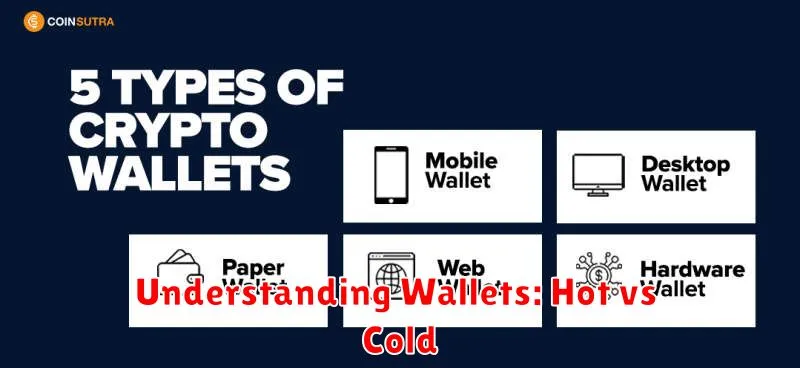
Cryptocurrency wallets are digital tools used to store and manage your crypto assets. They are categorized as either “hot” or “cold” based on their connection to the internet.
Hot wallets, like mobile apps or web-based wallets, are connected to the internet. This offers convenience and ease of access but increases the risk of hacking. They are best for frequent transactions and smaller amounts of cryptocurrency.
Cold wallets, such as hardware wallets or paper wallets, are not connected to the internet. This significantly reduces the risk of theft but requires more technical understanding and may be less convenient for daily transactions. They are ideal for storing large amounts of cryptocurrency for long-term holding.
Choosing between a hot or cold wallet depends on your individual needs and risk tolerance. Consider the amount of cryptocurrency you hold and how frequently you plan to use it.
What Are Private and Public Keys?
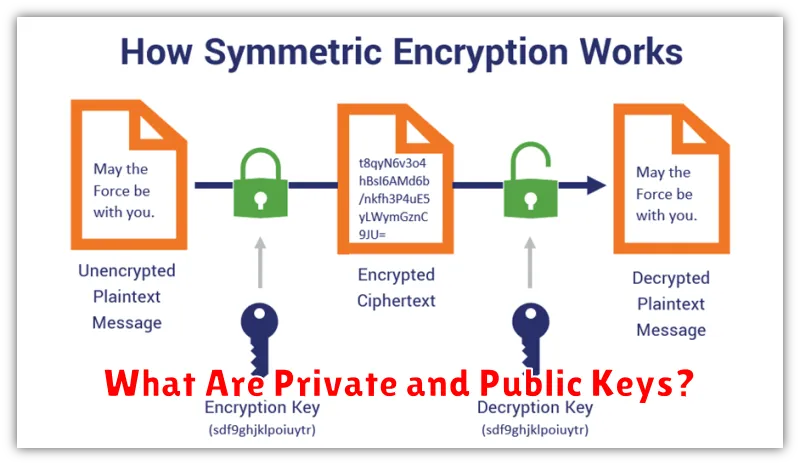
In cryptography, private and public keys are a pair of cryptographic keys used for asymmetric cryptography. They are mathematically linked, but one cannot be easily derived from the other.
Your private key is like a secret password, known only to you. It’s crucial to keep it secure; its compromise would grant access to your cryptocurrency or other assets. This key is used to sign transactions, proving that you authorized them.
Your public key, on the other hand, can be shared freely. It’s used to verify the signatures created with your private key. Think of it as your digital address; others use it to send you cryptocurrency or verify that transactions originated from you.
The relationship between these keys ensures secure communication and transactions. Only someone possessing the corresponding private key can decrypt messages encrypted with the public key, and only the private key can create signatures that are verifiable with the public key. This system forms the foundation of many blockchain technologies and secure online interactions.
The Role of Mining in Cryptocurrency
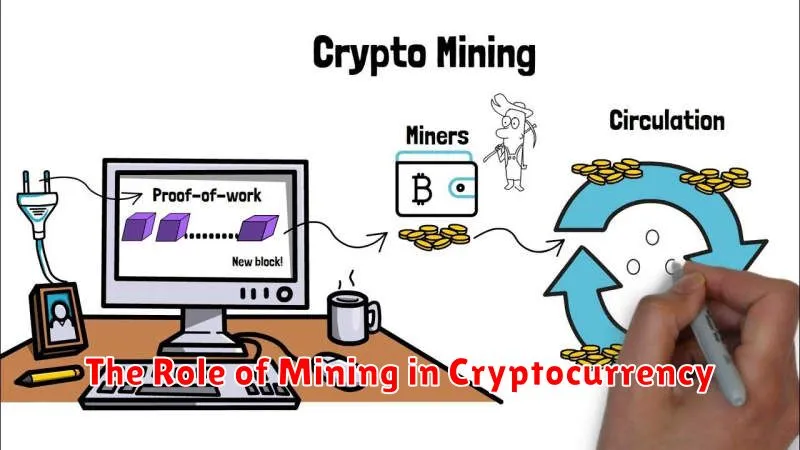
Cryptocurrency mining is the process by which new cryptocurrency units are created and added to the existing supply. It’s a crucial element in maintaining the security and integrity of many blockchain networks.
Miners use powerful computers to solve complex mathematical problems. The first miner to solve a problem gets to add a new block of transactions to the blockchain and is rewarded with newly minted cryptocurrency and transaction fees. This process is also what secures the blockchain network as it requires significant computational resources to try and alter past transactions.
The difficulty of these mathematical problems adjusts automatically to maintain a consistent rate of new cryptocurrency creation. This ensures that the system remains secure and prevents inflation from becoming excessively rapid. As more miners join the network, the difficulty increases, and vice-versa.
In essence, mining is the engine that drives the creation and validation of transactions within a cryptocurrency system, ultimately underpinning its decentralization and security. The rewards for mining incentivize participation and maintain the integrity of the network.
How Transactions Are Verified
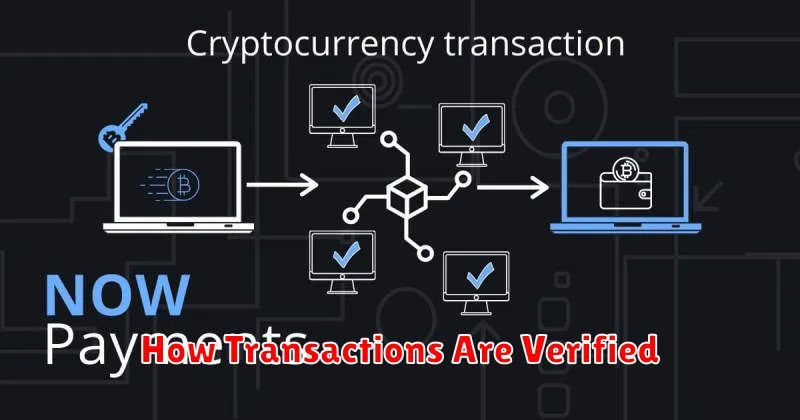
Cryptocurrency transactions are verified through a process called mining. This involves solving complex mathematical problems to add new transactions to the blockchain, a public, distributed ledger.
Miners compete to solve these problems first. The first miner to succeed adds the block of transactions to the blockchain and receives a reward in cryptocurrency. This process ensures the integrity and security of the transaction.
Once a transaction is added to a block and that block is added to the blockchain, it becomes virtually impossible to alter or reverse the transaction due to the distributed nature of the blockchain and the computational effort required to do so. This is often referred to as immutability.
